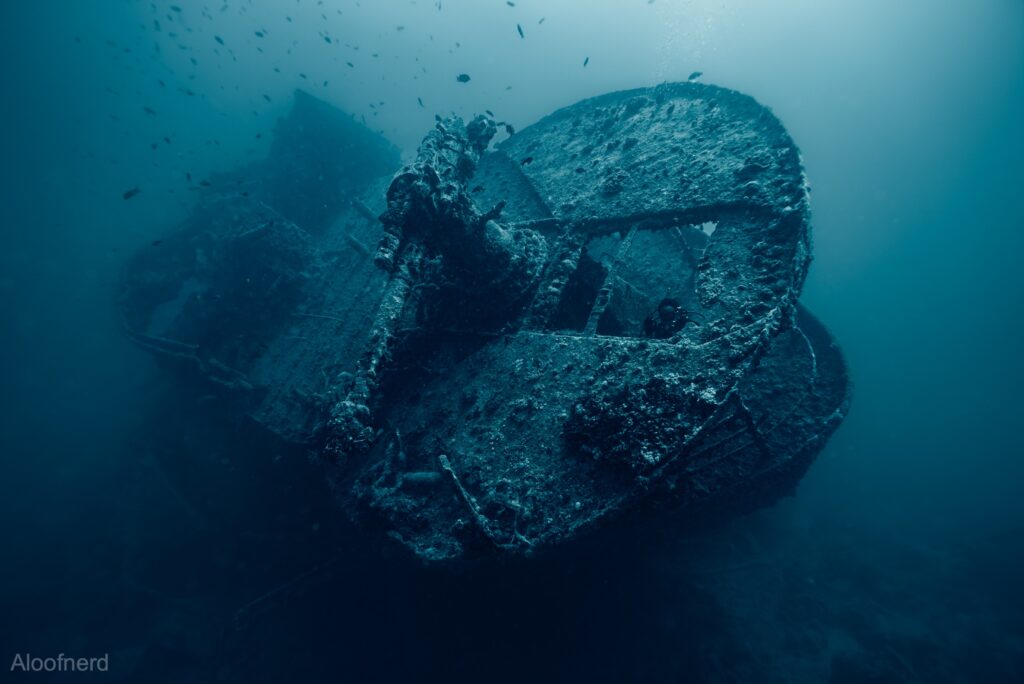Diving the Thistlegorm Shipwreck: Egypt’s Legendary WWII Wreck
Diving the SS Thistlegorm shipwreck is more than just a normal underwater experience — it’s one of the most iconic dive sites in the world. Resting at the bottom of the Red Sea near Ras Mohammed, this British armed freighter sank during World War II and now serves as a time capsule beneath the waves. Diving the Thistlegorm isn’t just about checking off a bucket list dive — it’s about stepping into a living piece of history, frozen in time but teeming with life.
Built in 1940, the Thistlegorm was transporting military cargo to British troops in North Africa when it was attacked by German bombers in October 1941. Two massive explosions split the ship apart and sent it to the seafloor, along with its full load of wartime supplies. The wreck was rediscovered in the 1950s by Jacques Cousteau, and it has been captivating divers ever since.
Swimming through History
Diving the Thistlegorm shipwreck today is an experience like no other. You descend into clear blue water and begin to make out the ship’s silhouette. its bow rising dramatically from the seabed. As you approach, the scale of the wreck comes into view. Trucks, motorbikes, crates of rifles, spare airplane wings, and even a railway carriage are still visible in the cargo holds. Everything is remarkably in a state of decent preservation, and the sense of history is overwhelming.
The site is accessible via day boats or safaris from Sharm El Sheikh. You can dive the wreck as part of a single or multi-day dive safari. Resting in a depth of depth of around 30 meters, the wreck site often has strong currents. As such, diving the Thistlegorm is recommended for advanced or nitrox-certified divers. It’s not just the historical significance that makes this site special. But, it’s also one of the most rewarding dives in terms of marine life. You’ll often see large schools of snapper, batfish, barracuda, and trevallies circling the wreck. Inside the ship, lionfish, moray eels, and nudibranchs have made their homes among the twisted metal.
A site At Risk

While the experience of diving the Thistlegorm is unforgettable, it’s also fragile. Years of diving activity have taken a toll on the wreck’s structure. For this reason, the work of digital preservation teams has become vital. AccuPixel, One of the leading efforts of wreck preservation, is taking innovative steps to document the site. A company specializing in high-resolution photogrammetry uses the tool to document the site in stunning 3D detail. Their work helps researchers and divers explore and understand the Thistlegorm without causing further damage to the wreck. You can view their incredible project here.
This digital record is not only a valuable tool for historical analysis. But, also serves as a virtual dive. This technology allows for those who may never get the chance to see the wreck in person. It ensures that future generations of divers, historians, and educators study and appreciate the Thistlegorm in the future.
Explore the Famous Site with an Accredited Team
At Sub Sinai Diving School, we regularly organize trips for diving the Thistlegorm shipwreck. Whether as part of a larger liveaboard itinerary or a long-range day trip. Our instructors have dived the wreck dozens of times and know how to guide you through the holds. We highlight key features, and keep you safe in what can be a challenging environment.

If you’re a diver with a passion for history, adventure, or photography. This dive should be at the top of your list. And if you’ve already been — you’ll know there’s always something new to discover. No two dives on the Thistlegorm are ever quite the same.
Conclusion on wreck diving
Diving the Thistlegorm isn’t just about what you see — it’s about what you feel. There’s a weight to the silence down there, a sense of awe that lingers long after you surface. It’s one of the few places where history and nature collide so beautifully. A surreal reminding us of the past while showing us the resilience of life under the sea.

